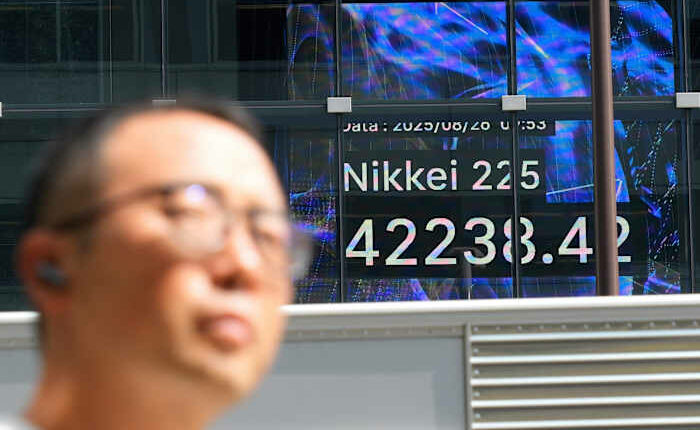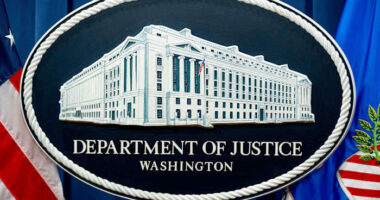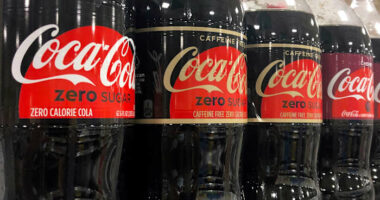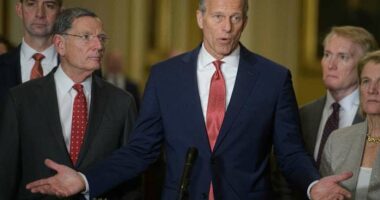Share this @internewscast.com
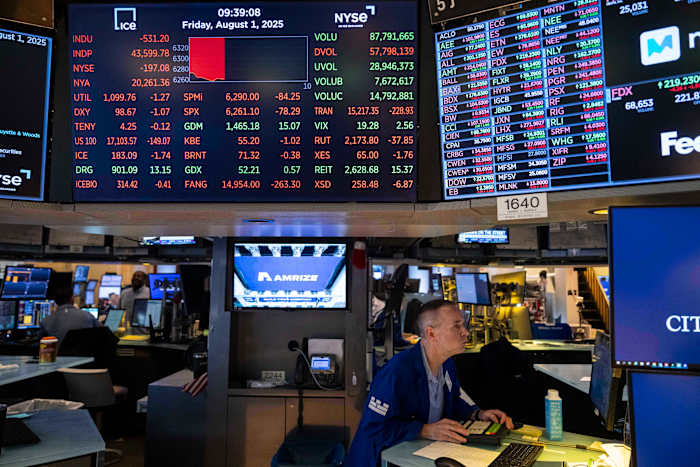
BANGKOK – Asian markets showed mixed performances on Wednesday, with Chinese stocks reversing early gains due to significant sell-offs in the property and pharmaceutical sectors.
U.S. stock futures saw minimal movement as traders anticipated Nvidia’s earnings report, set to be released after Wednesday’s market close in New York. The upcoming report from this key player in the artificial intelligence sector is expected to shed light on whether the market’s recent surge is driven by an inflated bubble or signals the start of a genuine tech revolution.
In Hong Kong, the Hang Seng index decreased by 1.4% to 25,160.23, while the Shanghai Composite fell 1.8% to hit 3,800.35. Recent record highs in the Shanghai index prompted investors to capitalize on their gains.
The Chinese government reported that industrial profits grew by 1.7% from January to July compared to the previous year, an improvement from a 2.8% decline in the first half. However, profits in July saw a 1.5% decrease year-over-year.
Japan’s Nikkei 225 rose 0.3% to 42,520.27.
In South Korea, the Kospi advanced 0.3% to 3,187.16.
Australia’s S&P/ASX 200 was up 0.3% at 8,960.50.
Meanwhile, Taiwan’s Taiex rose by 0.9% after a senior official assured that potential hikes in U.S. tariffs on semiconductor exports were not expected to significantly affect the island’s high-tech manufacturing exports.
Taiwan Semiconductor Manufacturng Co., the world’s largest contract chip maker, gained 1.3%.
In Bangkok the SET was up 0.4%.
In India, markets were closed for a public holiday as new 50% U.S. tariffs on exports took effect. This policy from U.S. President Donald Trump is likely to impact labor-intensive industries, notably textile manufacturing.
On Wednesday, the S&P 500 closed 0.4% higher and the Dow Jones Industrial Average gained 0.3%. The Nasdaq added 0.4%.
A report said consumer confidence declined modestly in August as anxiety over a weakening job market grew for the eighth straight month. The small decline from The Conference Board’s monthly survey was mostly in line with economists’ projections.
Wall Street notched big gains last week on hopes for interest rate cuts from the Federal Reserve. But markets were subdued after Trump escalated his fight with the Federal Reserve by saying he’s firing Federal Reserve Governor Lisa Cook. Cook’s lawyer said she’ll sue Trump’s administration to try to stop him.
Trump has been feuding with the central bank over its cautious interest rate policy. The Fed has held rates steady since late 2024 over worries that Trump’s unpredictable tariff policies will reignite inflation. Trump has also threatened to fire Fed Chair Jerome Powell, often taunting him with name-calling. Still, he is only one of 12 votes that decides interest rate policy.
Traders are still betting the Fed will trim its benchmark interest rate at its next meeting in September. Traders see an 87% chance that the central bank will cut the rate by a quarter of a percentage point, according to data from CME Group.
The Federal Reserve cut its benchmark interest rate in late 2024 after spending the last several years fighting rising inflation by raising interest rates. It managed to mostly tame inflation and avoided having those higher rates stall economic growth, thanks largely to strong consumer spending and a resilient job market.
The Fed hit the pause button heading into 2025 over concerns that higher tariffs imposed by Trump could reignite inflation. Lower interest rates make borrowing easier, helping to spur more investment and spending, but that could also potentially fuel inflation. However, concerns are deepening over the jobs market.
Friday will bring another update on inflation, the U.S. personal consumption expenditures index. Economists expect it to show that inflation remained at about 2.6% in July, compared with a year ago. Businesses have been warning investors and consumers about higher costs and prices because of tariffs.
In other dealings early Wednesday, U.S. benchmark crude oil shed 20 cents to $63.05 a barrel. Brent crude, the international standard, slipped 23 cents to $66.46 a barrel.
The U.S. dollar rose to 147.81 Japanese yen from 147.43 yen. The euro fell to $1.1610 from $1.1643.
Copyright 2025 The Associated Press. All rights reserved. This material may not be published, broadcast, rewritten or redistributed without permission.
